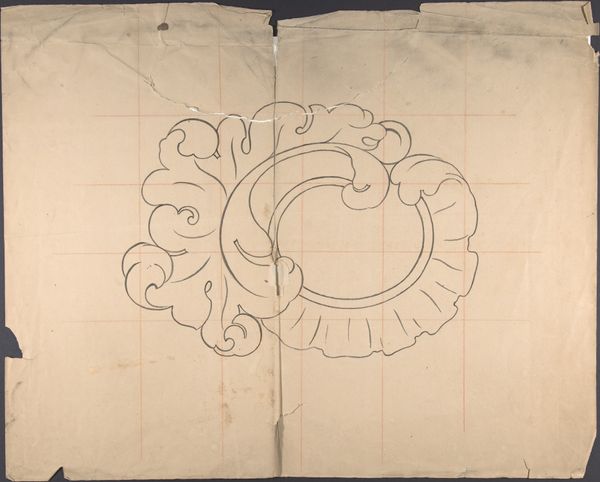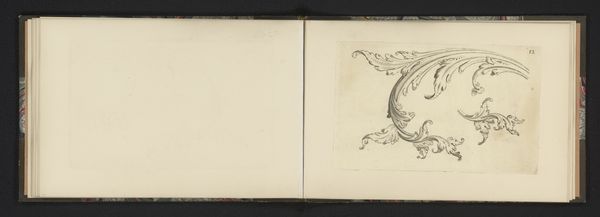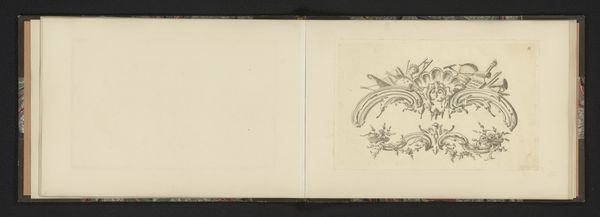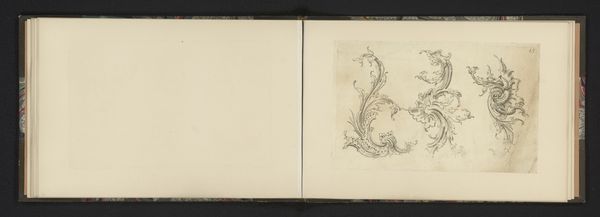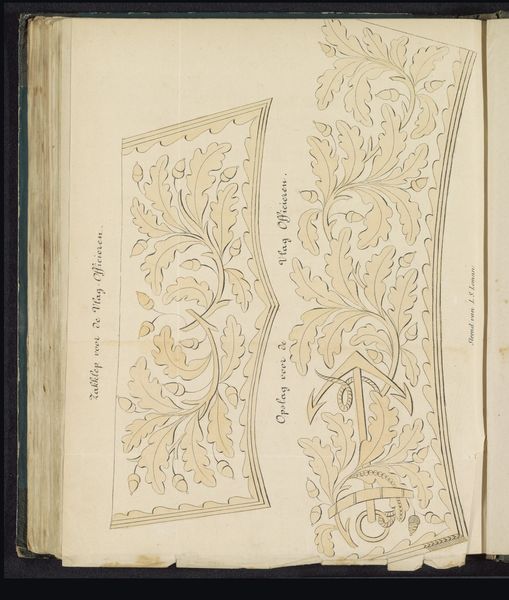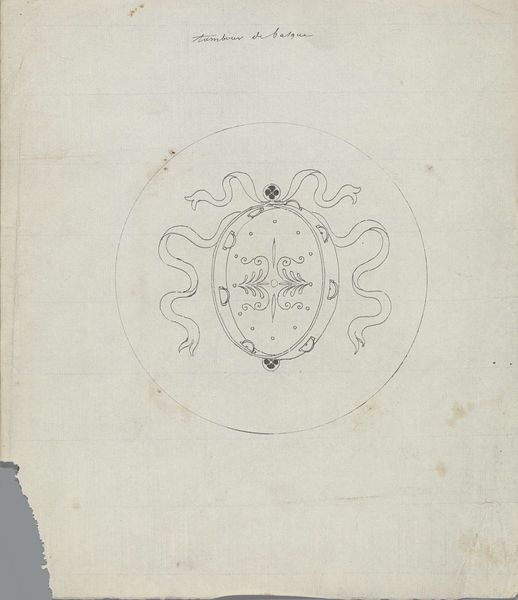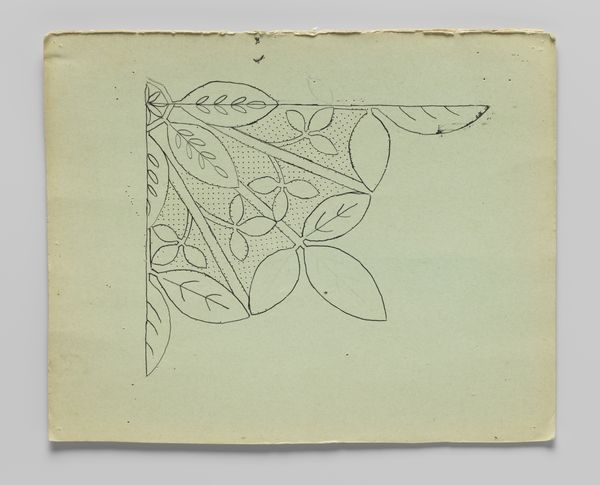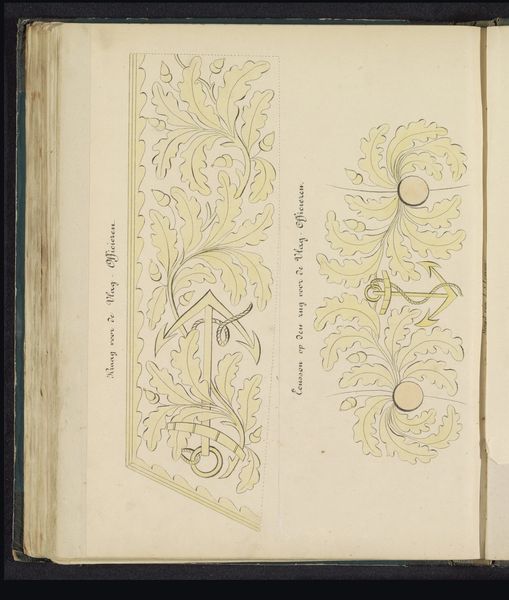
drawing, print, paper, ink, pen
#
drawing
#
toned paper
# print
#
old engraving style
#
paper
#
form
#
personal sketchbook
#
ink
#
ink drawing experimentation
#
geometric
#
pen-ink sketch
#
ink colored
#
pen work
#
sketchbook drawing
#
pen
#
watercolour illustration
#
decorative-art
#
sketchbook art
Copyright: Public Domain
Curator: This elegant study, entitled "Cartouche," created with pen and ink on toned paper, comes to us from the late 19th century and is currently held at the Metropolitan Museum of Art. Editor: It immediately strikes me as a celebration of form; the composition, primarily circular, seems both controlled and expressive with that lovely organic flow. Curator: Indeed, Robert William Hume created it during a period where decorative arts played a significant role in defining class and taste. Consider the social implications of who might commission or possess such intricate designs. It wasn't simply about beauty, it was about access, about establishing social hierarchy through visual markers. Editor: Do you think so? I’m wondering whether we are in fact giving the art world too much significance! What this illustration says to me more generally is that aesthetic principles can transcend mere material wealth, I think you have it in a study or a drawing. Surely you also have it at any larger scale; and whether on vellum, as here, or projected as ornamentation on architecture. The idea, and expression, can easily surpass questions of social significance! Curator: Your point is well-taken; the exploration of pure form does transcend boundaries. However, art always exists within systems, supported by specific economics and social practices. Even this beautiful cartouche would likely be replicated, mass-produced and distributed to specific groups. Let’s remember also that decorative-art has had in various ages, and places, differing receptions; including from a certain period after modernism which largely considered such art as of "poor taste". Editor: I find your reminder very worthwhile. While artistic expression might appear timeless, how different groups have appreciated art objects reveals much about what societies they belonged to. Now looking at the cartouche once again, one really appreciates what a wealth of implications there can be. Curator: And the dialogue itself evolves over time. Editor: Indeed; thank you.
Comments
No comments
Be the first to comment and join the conversation on the ultimate creative platform.
